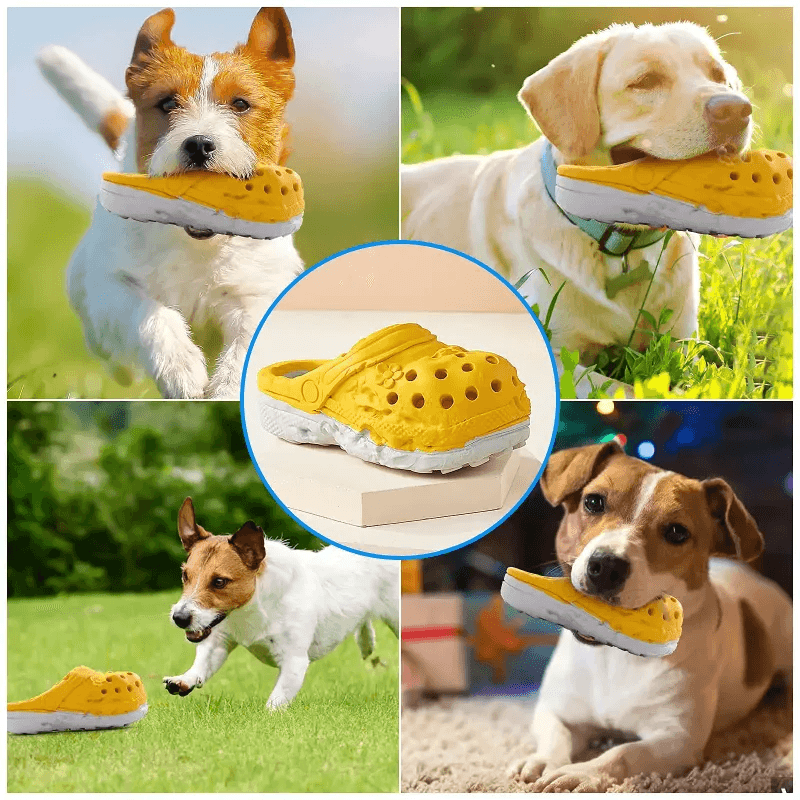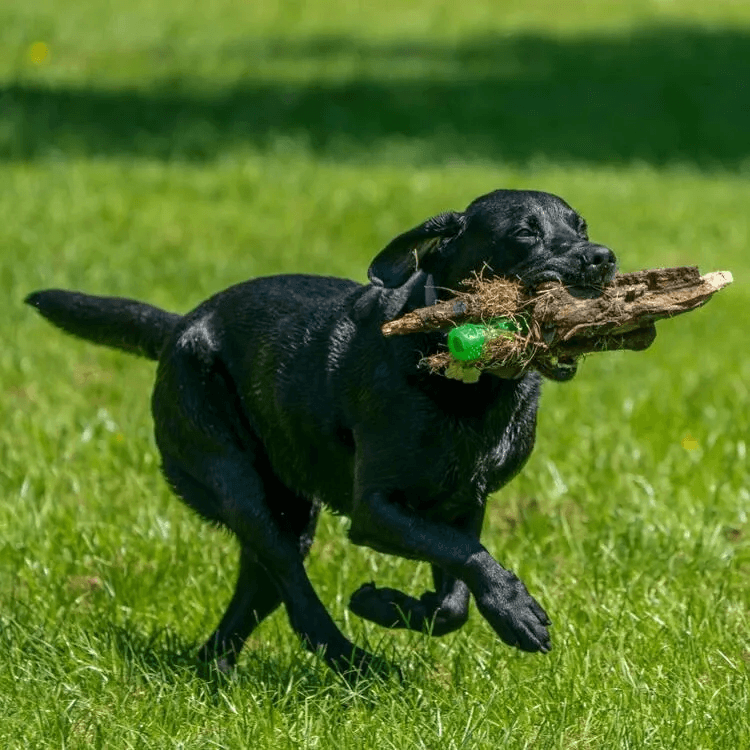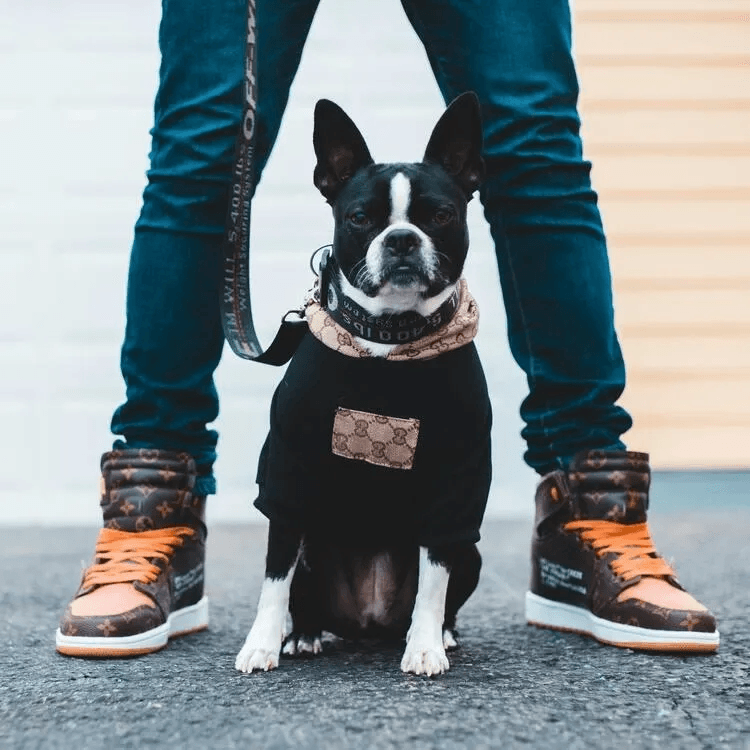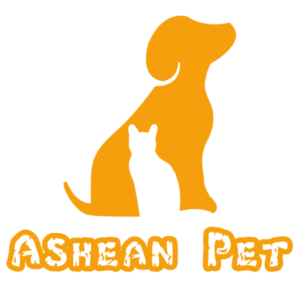
Don’t miss the opportunity to turn the glamorous training sessions into the ones with tails wagging, read our guide on how to create and train your dog with rubber toys. Whether you’re getting a toy for your dog or ‘teaching’ your dog how to catch a ball or sit down, this section is for you.
Preparing your Dog for Rubber Toy Training
Haven’t you sometimes imagined having a dog that could perform tricks like raising the paw or becoming your retriever extraordinaire? Well, as you know, with some training, your comrade can become your coolest companion! Training your pup isn’t only about coaching them how to do something impressive (although this is enjoyable). It is a splendid tool to help you bond with your pet and, at the same time, stimulate them mentally.
Rubber toys are also very effective in building your dog’s training sessions for a rather entertaining and amusing outlook. Eligible chew toys for dogs include rubber toys since they keep the dog busy while at the same time training it on various commands and behaviors. When you use dog rubber toys in training, you are making something that would be rather unexciting to your dog into something that also becomes enjoyable to both you and him.
Benefits of Using Rubber Toys for Dog Training
1. Durability: Dogs like to play rough, which is the same when it comes to training. Rubber toys are made with long-lasting materials to withstand their rough play. It is also a good option for dog owners as they are cost-effective for training.
2. Safety: Unlike other dog toys made with materials that can easily break into sharp and smaller pieces, rubber toys are soft and unbreakable, reducing the risk of injury. To top it all off, many rubber toys are made with non-toxic materials and chemicals, giving dog owners peace of mind.
3. Versatility: You can never get confused about what type of rubber toys to get for your dog, as they come in various shapes, sizes, and designs. This gives you a wide range of options to choose from for their training activities.
4. Mental Stimulation: Using rubber toys for your dogs’ training sessions provides mental stimulation. Toys like treats dispensers challenge them to think about solving a problem, keeping their minds active. This mental exercise saves them from boredom and behavioral issues.
5. Physical Exercise: Training your dog on games like fetch or catch helps them burn off excess energy and improve their physical fitness. Using rubber toys is a way to encourage this sort of physical activity and keep them not just happy but also healthy.
6. Positive Reinforcement: While some dog training sessions don't need toys, you can use rubber toys as rewards during and after training to reinforce their positive behavior. Your pups are motivated by fun, play, and rewards, so using rubber toys as rewards will help improve the bond between you and your pup.

Different Types of Rubber Toys
1. Balls: As you may guess, rubber balls remain one of the most popular toys for small and large dogs. They are great for the games of catch as they tend to bounce most unexpectedly thus requiring the dog to run after them. Some of the rubber balls include those with squeakers or balls that have features that let out treats during playtime.
2. Chew Toys: These toys are designed particularly for those dogs who like chewing their toys. The chewing toys are available in rubber material that is sturdy and will effectively help in satisfying a dog’s need to chew so that their teeth and gums can get the workouts they need.
3. Tug Toys: Rubber tug toys are designed for you to use while playing with your dog or pet. These are available in different forms, including ropes, rings, or a stick, and must be strong enough to match a tug of war. These toys are perfect for strengthening the muscles and also are very good for playing with your dog.
4. Treat-Dispensing Toys: These toys can be considered rather smart because they combine a play session with the feeding moment. These are made from rubber and the items have various holes and cavities where the treats can be placed such that the dog will have to figure out how to get the treats out. Food puzzle toys for treats are fun and stimulating to the dog’s mind, and it will take your dog several hours to finish it for the rewards it contains.
5. Squeaky Toys: Squeaky rubber toys are mainly interesting to many dogs. The fact that they make a squeaky sound that can bring even the wildest dog to play can make them the ideal toy for your pup. The toys are available in different shapes and sizes for kids, and most of them imitate different animals or other interesting objects.
6. Puzzle Toys: Rubber puzzle toys are the best for dogs that need to solve something and have fun. Such toys are usually those that have parts that can move or those that the dog has to use its paws to open to get the treats.
7. Rubber Bones: These toys come in the form of bones and are made from rubber that should be appropriate for chewing inclined dogs. They are permanent, and mainly the surface is non-slippery to assist in dental complications. Thus, the rubber bones are appropriate for single chun activities or group one, making it highly recommendable for dogs to include the bones among the playthings.
Factors to Consider When Choosing a Rubber Toy
1. Size: While choosing a rubber toy for your pet the size of that toy is very crucial so that the dog will not harm itself while having fun. So whenever you are choosing a toy for your dog make sure that the toy you have chosen is of the correct size that is ideal for your dog’s breed.
2. Durability: Both puppies and adult dogs do not chew with the same force, therefore, a suitable toy should be chosen based on the raw force of the dog. Choose a rubber toy that will last a long time and one that is difficult to split. For those who like to bite on their toys very hard, look for toys that are chew toys.
3. Safety: It is good to bear in mind that the most important thing is usually safety. Also, check whether the rubber toy is BPA-safe and does not contain small parts that can easily be ingested. Ensure there is no recall or warning on the toy, and always examine the toy for damage.
4. Texture: There are toys that either have ridges or bumpy surfaces, which aid in cleaning teeth and massaging the gums, which is good for dental hygienists. Textured foods also can help sustain your dog’s interest and prevent boredom.
5. Function: Think about what you expect the toy to achieve. Perhaps you need an item to entertain your dog, train, or simply keep your furry friend company. Some toys available in the market can be used to dispense treats, these are good for mentally challenging toys and those that can be chewed are good for satisfying the chewing urge.
6. Interactive Features: There are additional features found in some rubber toys such as food puzzles or ‘’sound’’ such as squeaking toys or toys that can be tossed around and roll in all directions. These can make playtime more stimulating and interesting for the dog which will make it spend more time playing.
7. Ease of Cleaning: Rubber toys tend to grimy quickly, of course, if they happen to be outside with your pet or with some treats. As a result, pay attention to the possibility of washing toys in a dishwasher or by hand and selecting products that can be cleaned easily. This will assist in maintaining hygiene and increase the toy's durability.
8. Dog’s Preferences: Like many humans, each dog has his/her preferences. Consider the toys your dog already has an affinity for and attempt to get rubber types of that toy. People who have dogs that tend to chew will find a chewable toy to be the most suitable. A rubber ball may be the ticket if they like running after things and picking them up.

Basic Dog Training Techniques
1. Positive Reinforcement: Basically, Positive reinforcement refers to the practice of rewarding your dog anytime he/she is good. You should always encourage your puppy, this can be with words as well as toys, whenever they obey or do something right or follow your commands.
2. Clicker Training: Clicker training employs a small device that produces a clicking sound to signal the dog when he behaves correctly. Follow the click with a treat, and in no time at all, your dog will be able to link the click with a treat. I want to note that it is beneficial for teaching new commands and tricks because learning becomes as precise and clear as possible.
3. Crate Training: Crate training assists in making your pet see his crate as just the right place, perhaps a home, to be. Firstly, introduce the dog to the crate. The door is opened, and you lure the dog with treats and toys into the crate. This means that over time, you need to elongate the time your dog has to spend in the crate while ascertaining its safety and comfort. This technique is perfect for housetraining and offering your dog a comfortable and secure den.
4. Leash Training: Leash training is a training process that teaches a dog to walk freely without being forceful on a leash. Use the collar and lead that your dog is comfortable with, and encourage your dog to walk by your side. If your dog pulls, then you should harness and join the line to stop and wait for your pet to return to your side. The exercises require much time and repetition to effect positive behavioral change.
5. Sit Command: Teaching one’s dog to sit is among the initial things that must be taught to the pet. Take a treat near your dog’s snout and draw it up, over your pet's head, and backward. This way, while following the treat with their nose, their bottom will go down, thus assuming a sitting position. Once the dog sits, immediately offer the treat and/or a positive word. Execute this until the dog comes to understand and respond to the command.
6. Stay Command: The stay command is significant because it enables you to anchor your dog. Begin with the dog sitting. Putting yourself in front of your dog with your palm facing the dog down, command them with “stay” and then move a step backward, and if they do not move you, reward them. Successively, it is also necessary to start with space and time for staying far from the dog, and it is always necessary to reward the animal for patience.
7. Come Command: The command must be taught to your dog as it helps keep the animal safe at all times. Begin at a less busy location, where you and other people in the environment are unlikely to be disturbed easily. Use the dog's name followed by the word ‘come', in a cheerful voice. However, you must feed and appreciate them simultaneously when they come to you. Continue to use this command when the puppy is inside or outside, when there are distractions, and at any new location to help your dog master the recall command.
8. Leave It Command: The leave it command, as its name suggests, helps your dog leave objects or areas alone that it should not get close to. Conceal the treat in your fist, put the fist in front of the dog, and say, ‘Leave it.’ Offer your dog a different treat when it desists from attempting to get the first one.
Importance of Consistency and Patience in Dog Training
1. Building Trust: This is because consistency in training is important, as it makes the dog trust you. If your dog knows what you will do, he is assured, which is why such a statement holds water. This trust builds the relationship in a way that improves the training sessions and makes them less boring for both of you.
2. Clear Communication: Dogs, in particular, are good at understanding instructions in their day-to-day activities. In this way, the same commands and means to prompt your dog encourage the pet to comprehend your expectations. This makes learning easier for your dog; it does not confuse the dog. Hence, they will start obeying your commands.
3. Reinforcing Good Behavior: Training helps in unlearning bad behavior; this is built by consistently practicing good behavior. Whenever your dog obeys a command given to him, he learns that if he does the right thing, something good will happen to him. This implies that they are likely to repeat the behavior that has been encouraged in the future by the persons influencing them.
4. Creating a Routine: A dog is the kind of animal that tends to stick to a certain routine. Scheduling your training helps your dog set a routine that enables him/her to know when it is training time and when it is playing. On the same note, having a schedule also makes the training sessions something that the dog appears excited to attend.
5. Patience Leads to Success: Training is not an event, but a process that requires quite some time to accomplish; thus, there is a need to exercise patience throughout the entire process. All the dogs have their learning abilities hence, it is good not to pressure the dogs into learning with haste.
6. Reducing Frustration: Patience makes working with your dog less frustrating for you and helps your dog cope with the inevitable hiccups along the way. If this is not the case, relax and attempt the task one more time. Dogs are also capable of mimicking the signs of the person that they are with and this is why being calm and patient will help your dog to remain as patient and calm as you are.

Conclusion
Socialization as well as obedience can also be learned using rubber toys making education and fun a package deal for your dog. Rubber toys are safe to use, long-lasting, and play has no limits and can be used for teaching commands, rewarding good behavior as well as for mental and bodily development. So when included in the training procedure, these toys will be as useful both for the trainer and the dog and help to develop a stable relationship between you two.
Purchase rubber toys the size of your dog and the chewing ability you have observed and use them in your training from today. Accompany every success achieved with your dog with effective encouragement and reinforcement, and may your dog develop into a fine and healthy pet. Time flies when you are learning and having fun at the same time.
FAQs
1. What types of rubber toys are best for training my dog?
You can buy chew toys that are ideal for puppies with teething problems. When you want to discourage a puppy from chewing shoes or furniture, you can get an interactive toy that doubles as a treat dispenser. Balls and different types of tug toys are ideal for training in the fetching session and the tug-of-war commands.
2. How do I know if my dog enjoys training with rubber toys?
In the training sessions, note your dog’s posture and activity level. If the dog enthusiastically plays with the toy, starts to wag its tail, and responds positively to commands, then it is good to know that the dog is having fun.
3. Can rubber toys help with behavior issues like chewing or excessive energy?
Rubber toys can also address the chewing desires of your dog and, therefore reduce the destruction of other items or properties. Moreover, the toys that can be squeezed or caused to release some food in return for some actions or toys that challenge the dog to figure out how to solve give good exercise to your dog and also mentally stimulate him.
